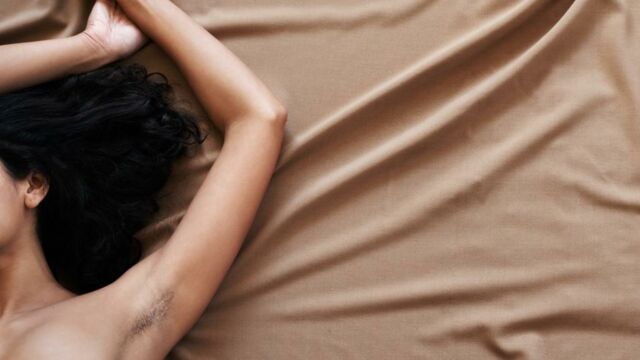In many ancient cultures, body hair had been a measure of social class. It was often associated with the lower class, who didn’t have the means to remove their body hair. In the modern era, body hair removal became a huge marketing campaign, and was prominently directed towards women, since hairless, smooth skin has been the beauty standard for women for quite some time.
Discover our latest podcast
While there might not have been a solid movement and support system to counteract the shame associated with having body hair back then, there’s been a wave of body hair positivity taking the world by storm in the past few decades.
So, what exactly is body hair positivity?
Like body positivity, body hair positivity is simply the belief that people, regardless of what society views as 'most desirable,' should embrace their body hair as they deem fit. Body hair is natural, and every human is different, meaning everyone’s body hair is different. Instead of shaming others and buying into the belief that hairlessness determines desirability, this movement calls for people to embrace the natural qualities of their bodies.
As a result, many women, non-binary people, and transgender people have challenged the centuries-old discrimination against body hair, allowing their hair to grow without caring about how they’re perceived. And even though society has followed suit in many ways, there’s still plenty of stigma that needs to be unpacked and biases that need to be dismantled.

A brief history
Hairlessness has long been lauded as the ideal appearance of a woman’s body. Artwork and poetry have always urged women to remove their body hair, or at the very least feel embarrassed for having it. Ovid, a Roman poet, advised women to groom their armpits and legs in 2 B.C. During the Renaissance, women and goddesses were all pictured without body hair, specifically pubic hair.
Gilette, one of the world’s leading shaving brands, marketed the first razor for women in 1915. The print ad describes the sleeveless gown trend taking the United States by storm, and explains that in order to be women 'of fashion,' women must shave their underarms.
Fast forward to the seventies and body hair has become a symbol of disruption and feminism. Unfortunately, what seemed like progress quickly dissipated in the eighties when the Brazilian wax went mainstream, and yet another beauty standard was forced onto women.
Where are we now?
Julia Roberts made headlines in 1999 when she showed up to a red carpet event with unshaven pits. Now, women embracing their body hair is more widely accepted and represented. Plenty of celebrities, such as Amandla Stenberg, Miley Cyrus, and Gigi Hadid, can show off their body hair without media going into a frenzy every time.

Body hair has even infiltrated the modern beauty scene, with models donning their body hair freely in all kinds of media. In 2018, the 'Januhairy' campaign spread like wildfire; much like Movember, Januhairy urged women to grow out their body hair for an entire month in the hopes of promoting positivity and self-confidence. As a whole, representation has increased tenfold in the past few years, leading to fewer people being concerned with their body hair. In fact, almost 1 in every 4 women under 25 no longer shave their underarms, which, in 2013, was only 1 in every 20 women.
Key figures
While there are plenty of people that have refused to remove their body hair for the sake of other people, like Frida Kahlo and her infamous unibrow, let’s focus on the ones making waves right now.
One of the most liberating brands in the body hair positivity movement has to be Billie, which is, ironically, a razor company. However, Billie is a bit different, in that one of their key missions is to disrupt the system. 'Project Body Hair' is a campaign that celebrates female body hair 'wherever it is or isn’t.' Billie lets people know that 'what you do with [your body hair] is up to you—grow it, get rid of it, or comb it. It’s your hair, after all.'
As the first women’s razor brand to show hair, they are also the first brand to reinforce that body hair and what you do with it is a personal choice, even if it means shaving. Body hair positivity is all about letting people embrace their hair in the ways they want.
Laura Jackson, the founder of Januhairy, echoes these same sentiments, saying:
Shave whatever you want to, but make sure you’re making the choice for you.
How do I practice body hair positivity?
- Don’t shame anyone for their choices. Some people like to shave, some people don’t, some people might like a mix of the two, and that’s okay! The point is to normalize doing whatever you want with your body hair. Work on detaching your opinions of beauty from society’s opinions of beauty.
- Expose yourself to the movement. Follow people that encourage this positivity. Some advocates of the cause include @queen_esie, @slaylonie, @harnaamkaur, and @i_am_morgie.
- Try it out! Maybe you’ve always enjoyed this movement and empowered others to do the same, but have been a bit hesitant about embracing it with your own body. Give it a try on your own terms or participate in a campaign like Januhairy.















